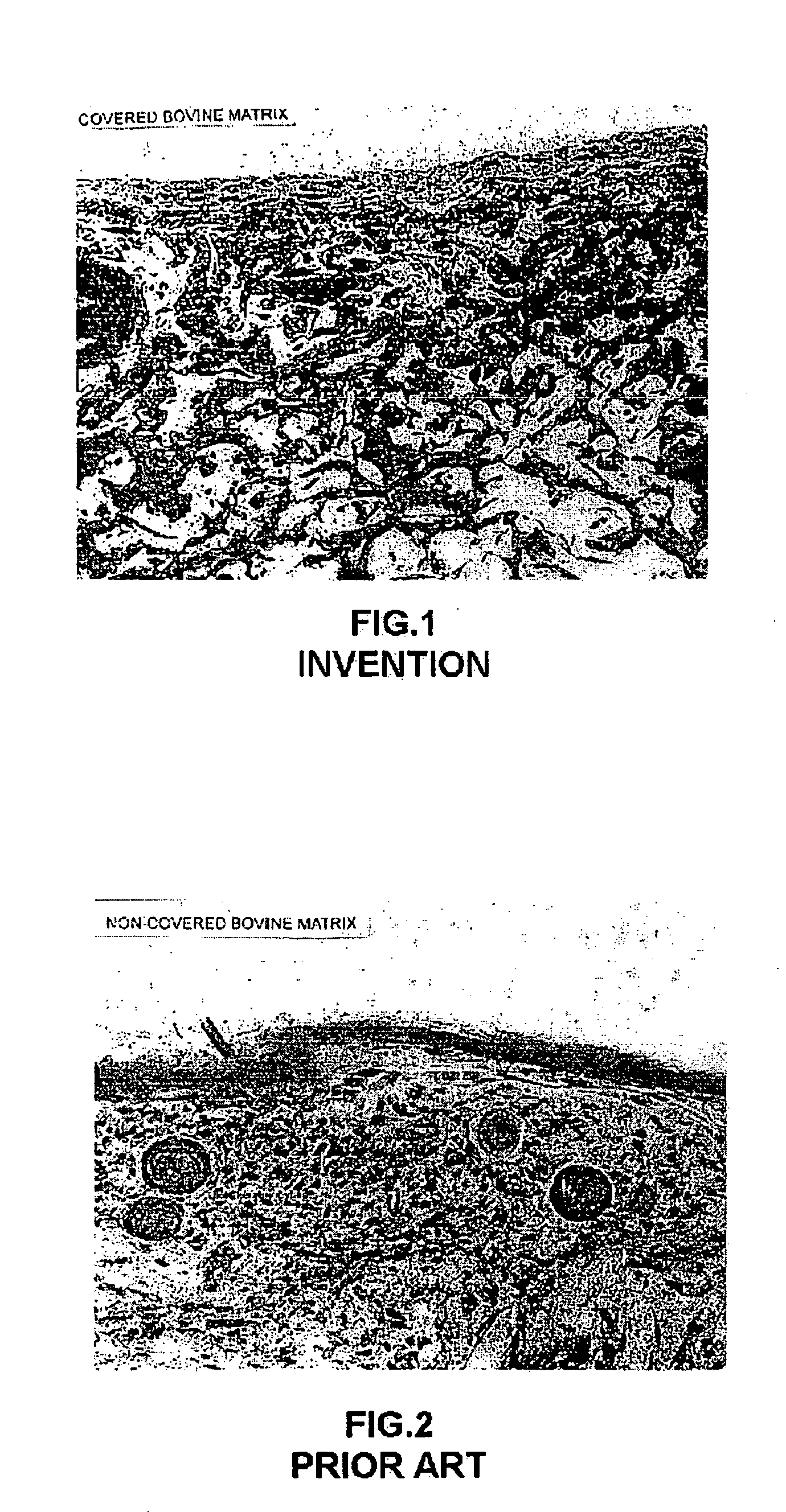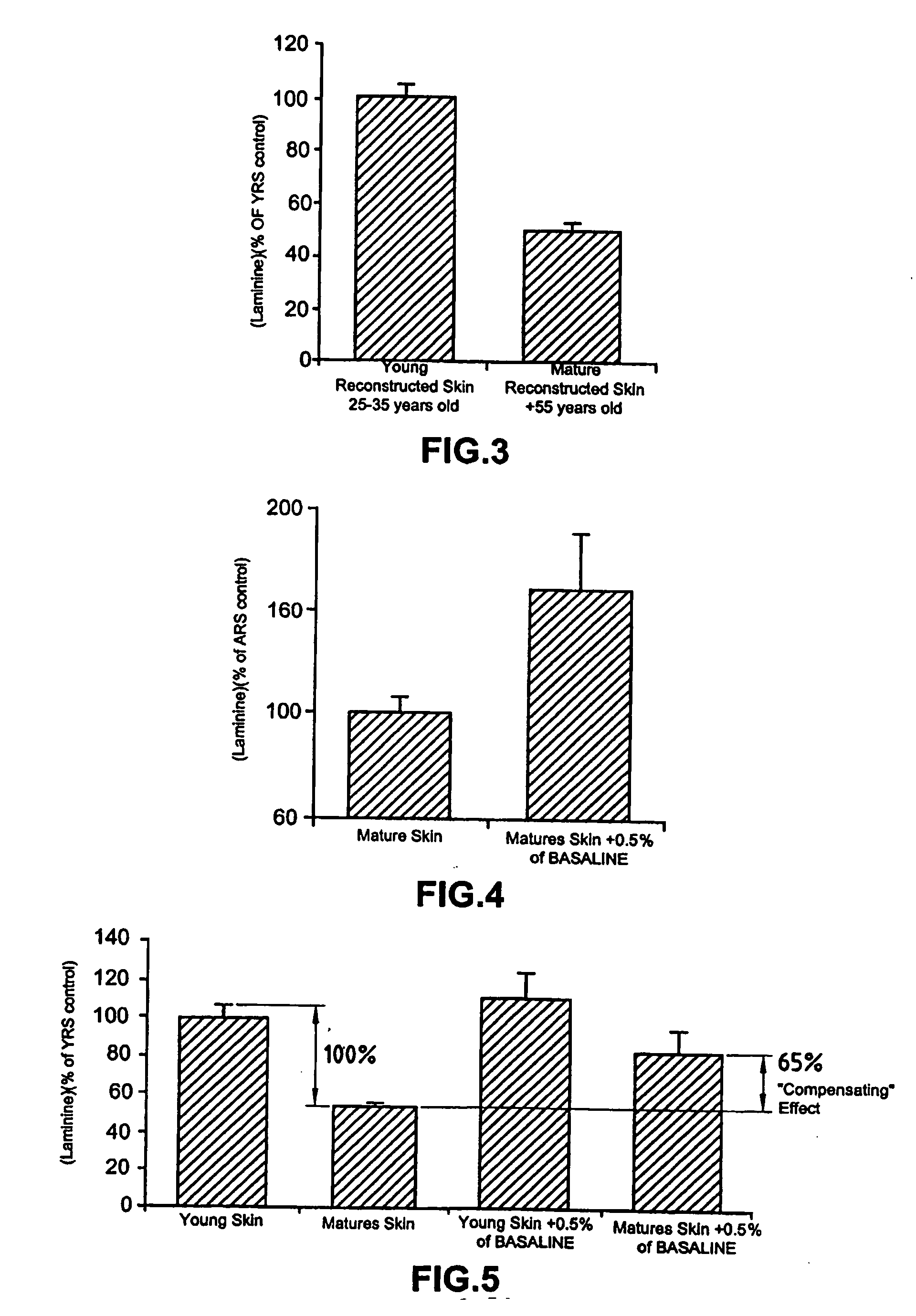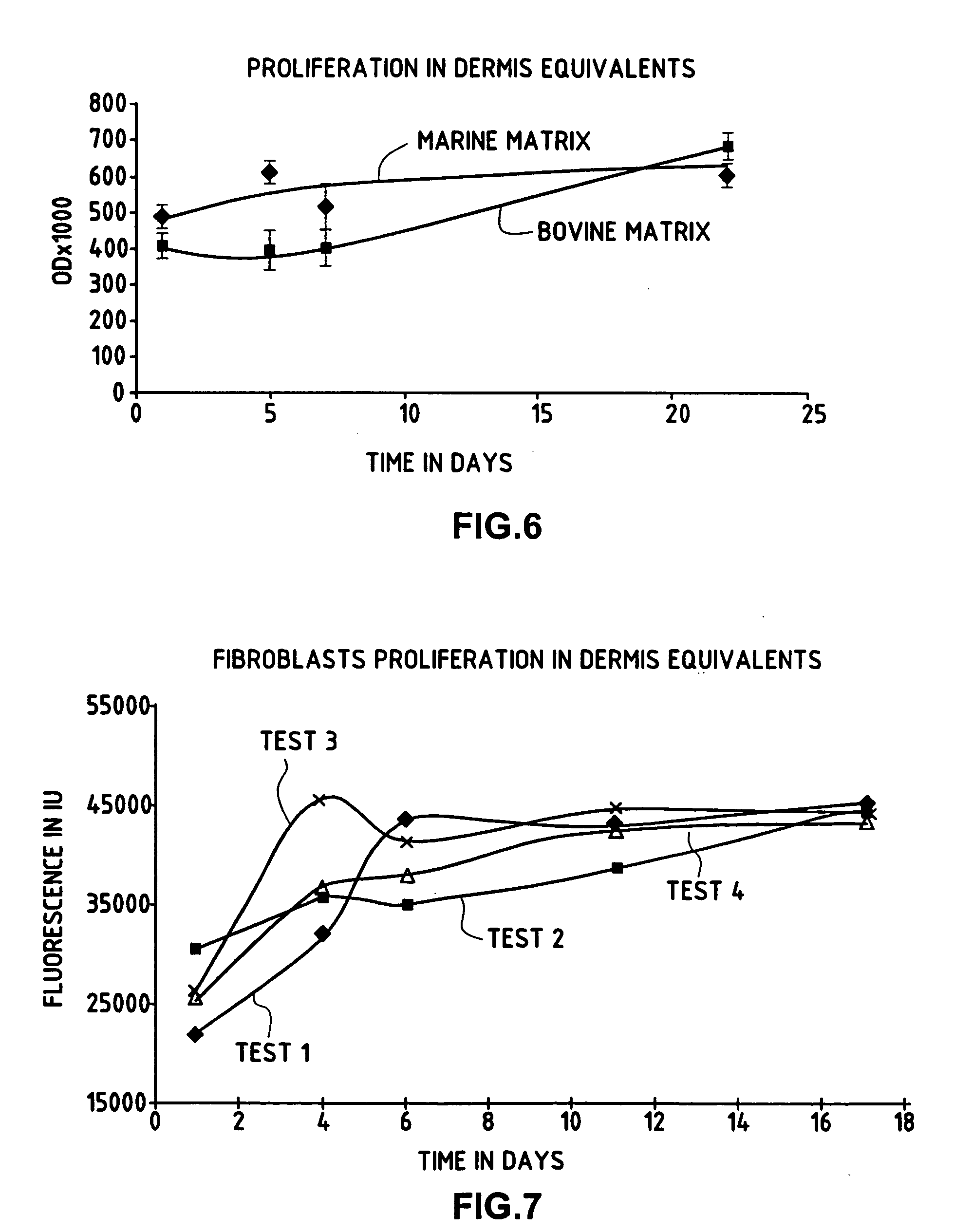Support with crosslinked marine collagen for tissue engineering and manufacture of biomaterials
a technology of crosslinked marine collagen and biomaterials, which is applied in general culture methods, epidermal cells/skin cells, skeletal/connective tissue cells, etc., can solve the problems of not providing collagen supports which satisfactorily comply with all research results
- Summary
- Abstract
- Description
- Claims
- Application Information
AI Technical Summary
Benefits of technology
Problems solved by technology
Method used
Image
Examples
example 1
OF THE INVENTION
Preparation of a Porous Collagen Layer of Native Collagen by the Technique of U.S. Pat. No. 5,331,092
A—Preparation of the Native Collagen
[0078] A gel is prepared from calf skins which have previously been washed (2 hours) and then depilated with a lime / sulfide mixture (lime: 3.5%, sodium sulfide: 2.5%) at a rate of 400 g of skin (solids content: about 30%) to 250 ml of water. This bath lasts for 30 minutes with rotation at 4 rpm.
[0079] The total depilation time is 36 hours.
[0080] The skins are then unlimed in a bath containing ammonium chloride (3%) and sodium metabisulfite (0.5%) at a rate of 400 g of skin to 50 ml of bath.
[0081] The total duration of this bath is 2 hours thirty minutes.
[0082] The salts are removed by two successive washes with water (15 minutes per wash) at a rate of 200 ml of water to 100 g of tissue.
[0083] The skins are subsequently ground and then washed by agitation for 1 hour with phosphate buffer of pH 7.8 (0.78 g / l of potassium dihyd...
example 2
OF THE INVENTION
Preparation of a Porous Collagen Layer Crosslinked with Diphenylphosphorylazide (DPPA) by the Technique Described in European Patent No. 466 829 of 24 Jul. 1996
[0089] The collagen lyophilizate is incubated for 24 h in a solution containing 5 to 250 μl DPPA / g collagen in 100 ml of dimethylformamide (DMF). The collagen is then rinsed in 100 ml of DMF to remove the DPPA. The DMF is then removed by rinsing in 100 ml of a borate buffer solution of pH 8.9 (0.04 M sodium tetraborate, 0.04 M boric acid).
[0090] The collagen is finally incubated overnight in the same borate buffer, the borate buffer then being removed by continuous rinsing with softened water for 6 h.
example 3
OF THE INVENTION
Preparation of a Porous Collagen Layer Crosslinked with Carbodiimide and N-hydroxysuccinimide
[0091] The collagen is crosslinked with EDC (ethyldlmethylaminopropylcarbodilmide) at a concentration of 0.23 to 0.69 g / g collagen and with NHS (N-hydroxysuccinimide) at a concentration of 0 to 0.42 g / g collagen.
[0092] After rinsing with softened water, the collagen is lyophilized again.
PUM
| Property | Measurement | Unit |
|---|---|---|
| temperature | aaaaa | aaaaa |
| temperature | aaaaa | aaaaa |
| pressure | aaaaa | aaaaa |
Abstract
Description
Claims
Application Information
 Login to View More
Login to View More - R&D
- Intellectual Property
- Life Sciences
- Materials
- Tech Scout
- Unparalleled Data Quality
- Higher Quality Content
- 60% Fewer Hallucinations
Browse by: Latest US Patents, China's latest patents, Technical Efficacy Thesaurus, Application Domain, Technology Topic, Popular Technical Reports.
© 2025 PatSnap. All rights reserved.Legal|Privacy policy|Modern Slavery Act Transparency Statement|Sitemap|About US| Contact US: help@patsnap.com



